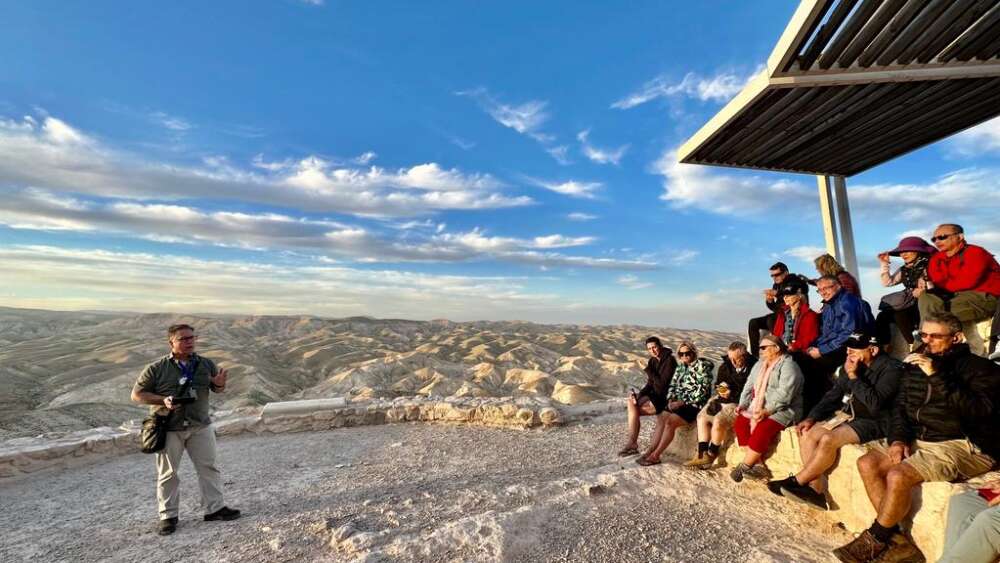As I stand on a ridge at Wadi Qelt, overlooking the Judean wilderness next to the famous Roman road from Jerusalem to Jericho, it all becomes clear.
To the right we see where Jesus was baptised in the Jordan River and we can easily visualise how Jesus then just kept walking into the adjoining wilderness, where he was tempted by Satan.
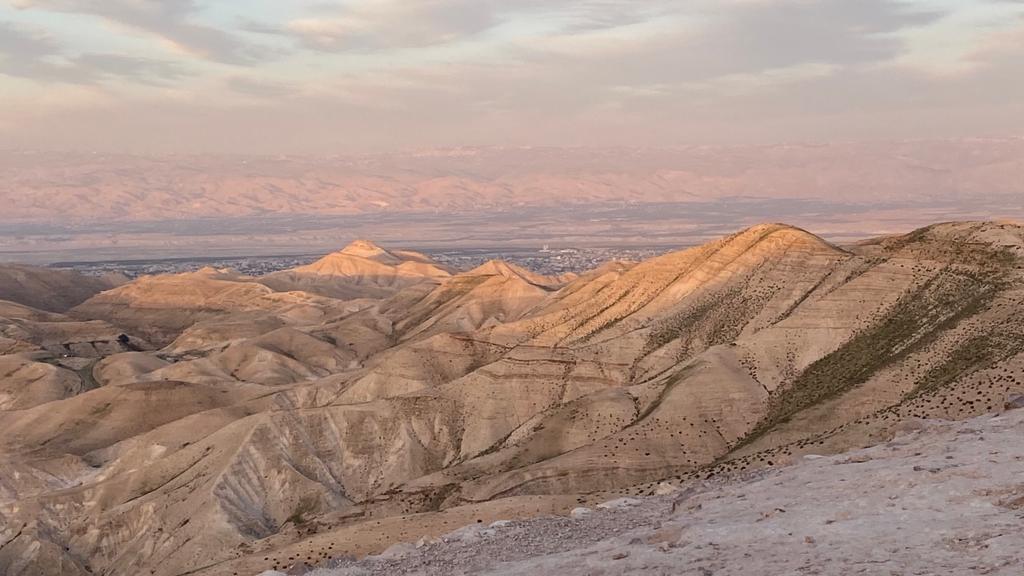
The Judean Wilderness where Jesus wandered for 40 days.
Suddenly it makes sense that Jesus spent 40 days and 40 nights wandering up and down these rugged hills and valleys, ruminating on the journey ahead of him and being tempted to turn these stones into bread as he suffered intensifying hunger, yet clinging to his Father’s promises.
I’m touring Israel with ancient historian and author John Dickson and 45 of his new “besties”, as he calls this Origins of Christianity Tour group, organised by Selah, a Christian tour company.
One of our “Origins” group has tears in her eyes as her tender heart feels the pain of her Saviour’s ordeal, and we all see with new eyes how it must have been for Jesus, wandering up and down and around these hillocks and gorges as he pondered his destiny.
Seeing the land where Jesus walked 2000 years ago is a revelation. When I read this scene in Matthew’s Gospel, it now pops out at me in full colour and vibrancy.
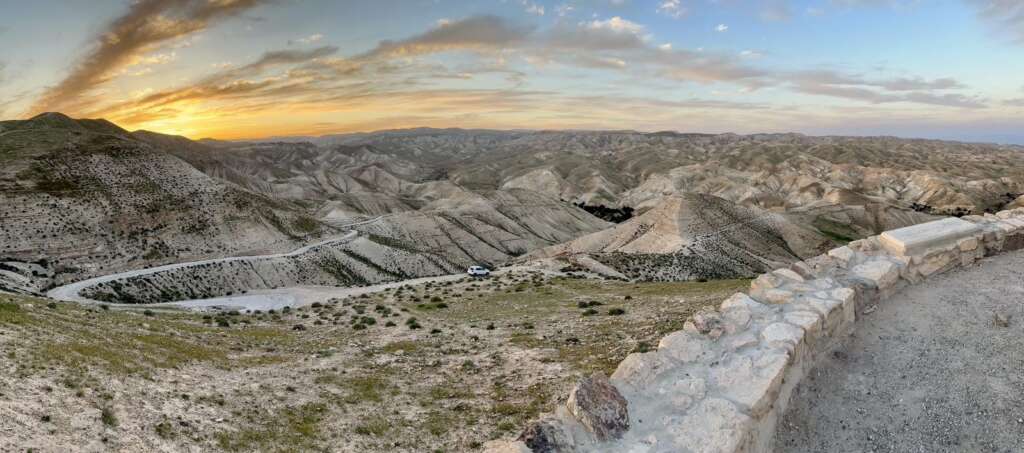
The Roman road from Jerusalem to Jericho
But I’m not only seeing with new eyes but hearing with new ears – thanks to the powerful storytelling of the Wheaton College professor and host of the Undeceptions podcast.
As the sun sets over the rocky landscape, Dickson gives a lecture explaining how Jesus affirmed and critiqued a new strand of Judaism that emerged in opposition to the four other sects of the time: the Pharisees, Sadducees, Essenes and Zealots.
This Baptiser Renewal Movement within Judaism proclaimed that there was no way to be purified by the law, but that everything was wrong, including themselves, and the only way to avoid the forthcoming judgment was to be washed in baptism and begin anew.
As we know from the Bible, crowds of people came to John the Baptist to be baptised in the Jordan River to escape “the coming wrath,” but Dickson tells us there was another wilderness baptiser called Banus. Like John, Banus also lived in the desert and, according to ancient historian Josephus, “used no other clothing than grew upon trees, and had no other food than what grew of its own accord, and bathed himself in cold water frequently, both by night and by day, in order to preserve his chastity.”
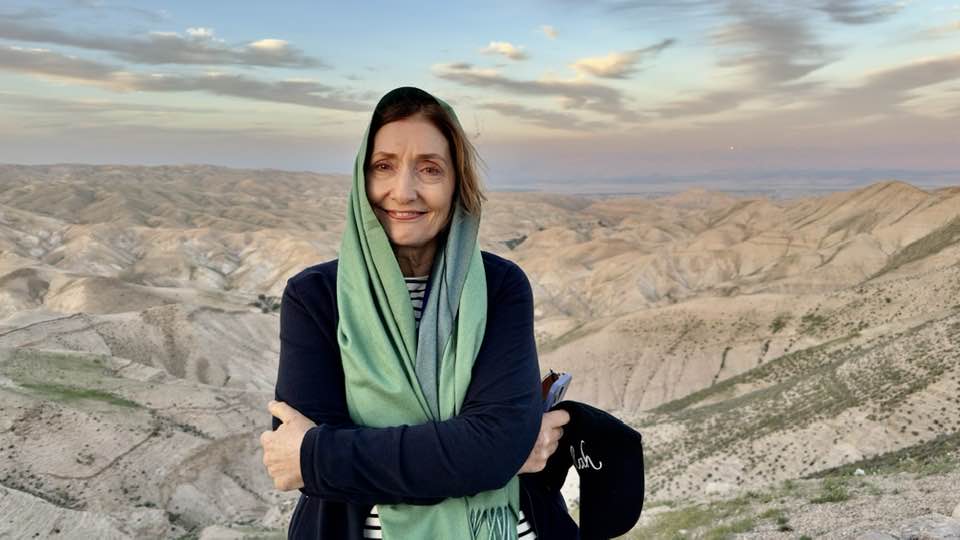
The author at the spectacular Wadi Qelt
Dickson leaves us with the sense that, as Christians, we are simply Jews who have been grafted in by Jesus’ sacrifice, which washes us clean.
Seeing Jesus in his historical Jewish context is key to this cultural and historical tour of Israel, which Dickson stresses is not a pilgrimage. He has been leading tours here since 2007 and with Selah Travel since 2018. I ask him what he gets out of it. “Seeing all your faces,” he says.
There is no singing or praying and scant attention is paid to early churches of gaudy religiosity. As a biblical scholar and ancient historian, Dickson is interested in highlighting how radical Jesus’ teaching was when set against the expressions of Judaism in Jesus’ day.
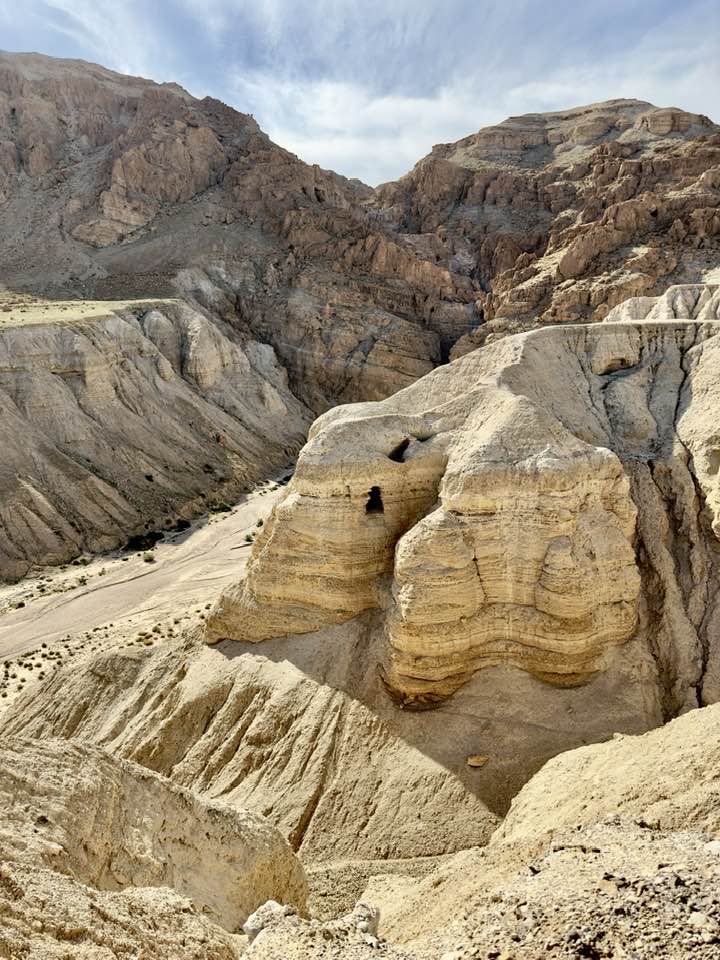
The caves at Qumran where thousands of 1st-century scrolls were found.
Hence, when visiting Qumran, the monastic community in the wilderness of Judea where the Dead Sea Scrolls were found, we learn about the Essenes, a separatist group who shared possessions, ate communally, practised ritual immersion and worked at disciplined study and worship.
At Masada and Gamla, we learn about the Zealots – Pharisees with a military theology – who gave their lives fighting against the Romans in an attempt to establish a kingdom of God on earth.
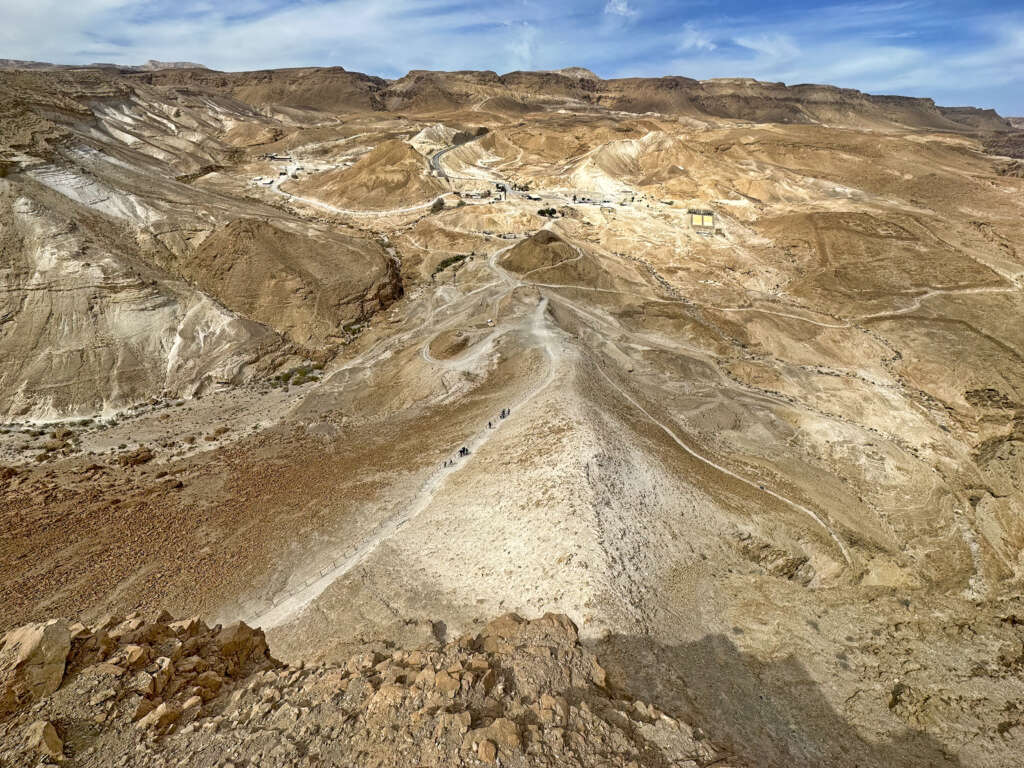
The remains of the stone ramp at Masada by which the Romans overpowered the Zealots.
We shiver with terror at the hilltop fortress of Masada as Dickson recounts how the Zealots under leader Eleazar had retreated there after the fall of Jerusalem in AD70 and then watched as the Romans, under commander Silva, stormed the ramparts of their refuge at the end of the war with Rome in AD73.
We imagine their despair as, assailed by a battering ram, fire and finally an assault by stone ramp, this holdout of Zealots decided to commit suicide rather than be taken and tortured as slaves by the Romans.
According to Josephus, “the husbands tenderly embraced their wives, and took their children into their arms, and gave the longest parting kisses to them, with tears in their eyes” before slaying them “as the lightest of those evils that were before them …
“They then chose ten men by lot out of them, to slay all the rest; every one of whom laid himself down by his wife and children on the ground, and threw his arms about them, and they offered their necks to the stroke of those who by lot executed that melancholy office; and when these ten had, without fear, slain them all, they made the same rule for casting lots for themselves, that he whose lot it was should first kill the other nine, and after all, should kill himself.”
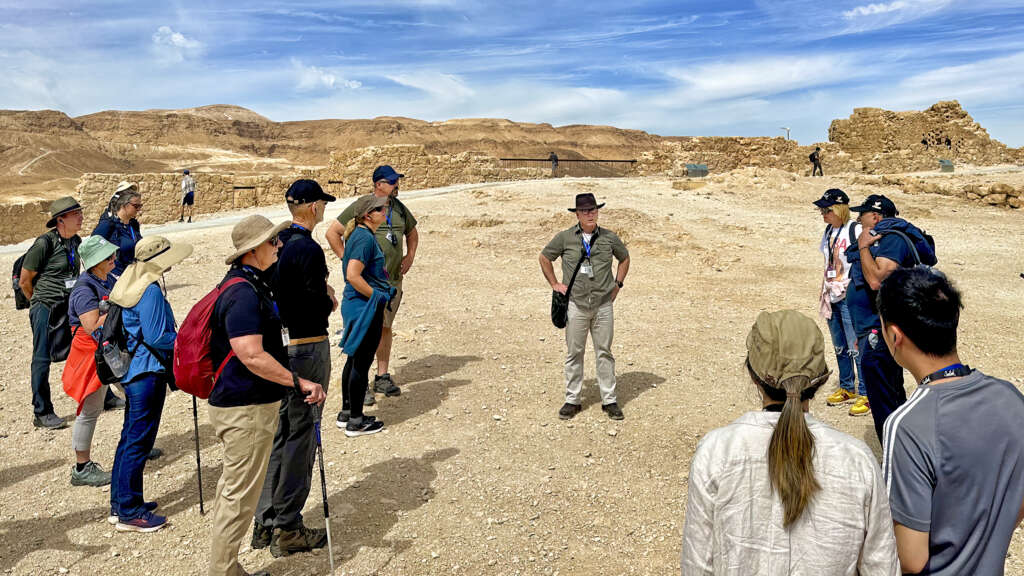
John Dickson and entourage at Masada. The fort is in the background.
From Masada on the southwest shores of the Dead Sea, we travel north to Galilee, where we suddenly understand the biblical promise of the “land of milk and honey.” While Judea had its own beauty, it was very rocky and stony, whereas Galilee is so lush, green and fertile that the laziest farmer could make a living, in the words of the trusty Josephus.
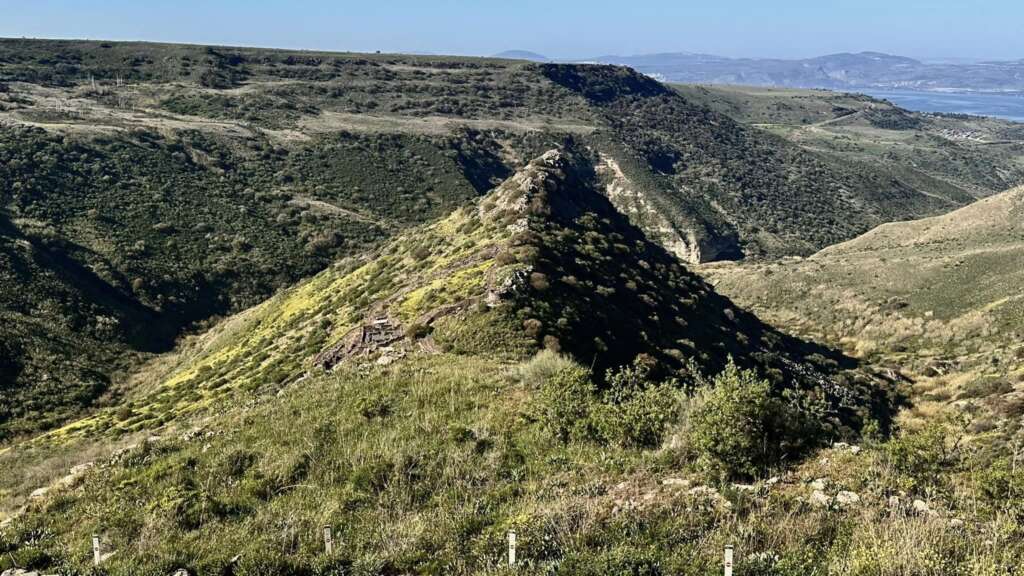
Gamla
Here the climactic day is spent at Gamla, Dickson’s favourite place in Israel, where the Origins saw their leader at his most excited.
Gamla, a camel hump of a city in the Golan Heights (northeast of the Sea of Galilee) became a rebel stronghold during the Jewish uprising against Roman occupation and their puppet king, Herod Agrippa, until the Romans took it in AD67 in similarly apocalyptic style to Masada. About 4000 rebels lost their lives in the fighting and the remaining 5000 chose to die rather than surrender by jumping off a precipice.
“The man who founded Jewish ‘zealotry’ – basically, Pharisaism with a military theology – came from this city in ancient Galilee,” Dickson tells us.
“His name was Judah of Gamla and he started a full-on rebellion against Roman taxation and occupation in AD6, when Jesus was a young boy.
“Judah’s rebellion was crushed, but his sons – Jesus’ contemporaries – and grandsons kept the flame of revolution burning until the great Jewish revolt of AD66-73.
“Near the beginning of that war, in October-November AD67, the Romans attacked Gamla and destroyed it, with thousands of men, women, and children being slaughtered or else jumping to their deaths over the precipice.”
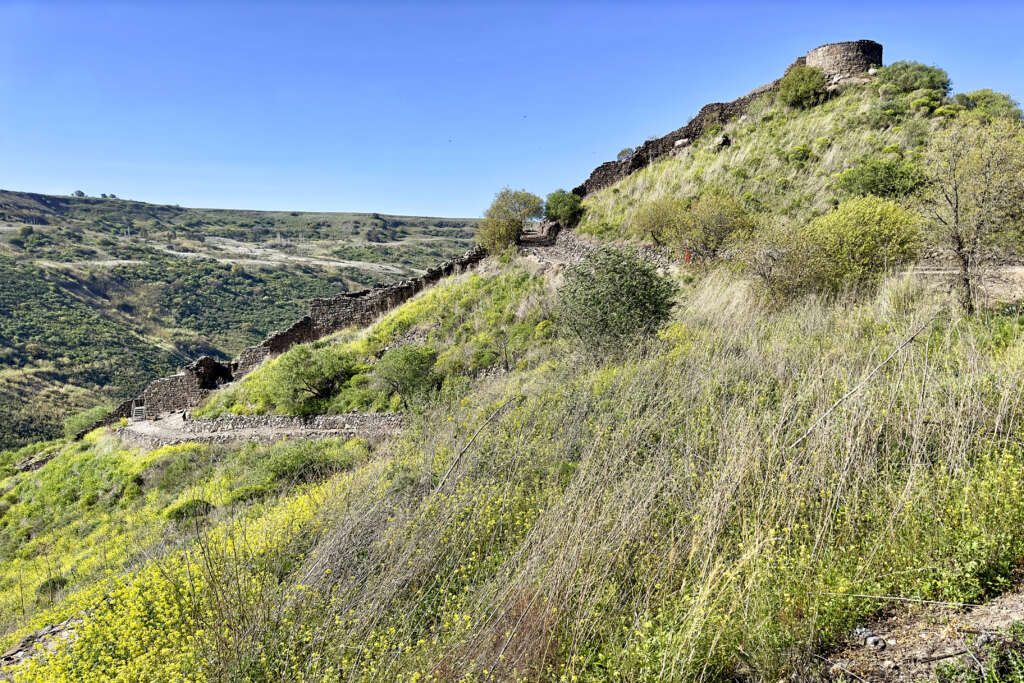
Ruins of the city at Gamla.
After Dickson tells the chilling story of Gamla’s fall, we all sit in the remains of the city’s large 1st-century synagogue, and he asks us to imagine Jesus teaching here, the home of zealotry, and urging his hearers to love their enemies, do good to those who hate them, and become peacemakers.
We know how radical Jesus’ teaching was. And yet it seems even more dramatic when set against the militaristic expressions of Judaism of Jesus’ day.
Dickson says: “I think of [Gamla] as the perfect place to reflect once more on Jesus’ vision of what that Jewish phrase kingdom of God would look like. All Jews believed in the kingdom of God, except for the Sadducees – they were quite happy with their kingdom running the temple, running industry – but every other Jew believed in the kingdom of God.
“In fact, our Orthodox Jewish friends today pray for the kingdom of God on a daily basis, and Jesus almost certainly taught in this synagogue.”
Dickson says the reason for historians’ confidence that Jesus taught in this synagogue is from texts such as Matthew 4, which says, “Jesus went throughout Galilee teaching in their synagogues, proclaiming the good news of the kingdom.”
“This is so well within his field of Galilee and ministry, and this synagogue was such an important synagogue, a synagogue that represented so much of what Jesus opposed. I think it’s extremely likely Jesus came here deliberately to preach … And so I do believe he came here and he taught his vision of the kingdom of God.”
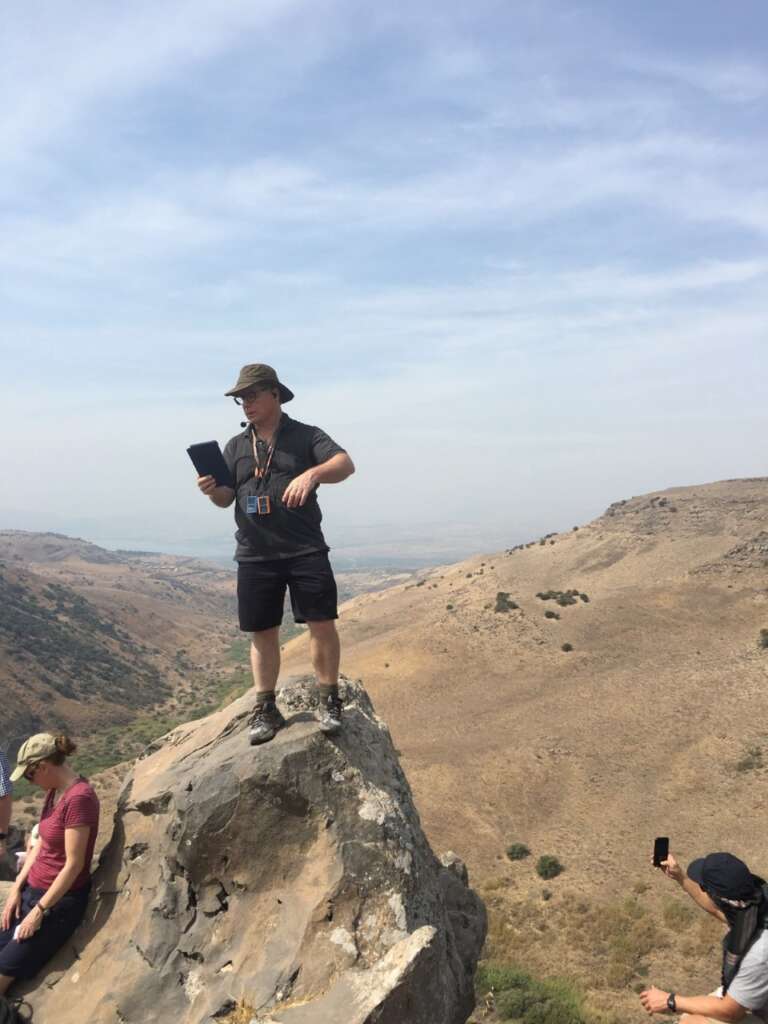
John Dickson tells the story of the tragic fall of Gamla from a precipice near where the citizens fell.
Dickson then reads from a Pharisaic zealot text from slightly before Jesus, giving a vivid idea of what the Zealot Pharisees hoped for.
“We hope in God, our Saviour, for the strength of our God is forever. The kingdom of God is forever over the nations in judgment. See the Lord raise up for Israel their king, the descendant of David, to rule your servant Israel. Undergird him with strength to destroy the unrighteous rulers, purging Jerusalem from the Gentiles to smash the sinners out of the inheritance, to smash their arrogance like a potter’s jar.
“There will be no unrighteousness in those days among them. For everyone shall be holy and their king shall be the Lord Messiah.”
Dickson explains that the Zealots regarded Roman taxation as no better than slavery, and exhorted the whole nation to assert their liberty “and the nation was infected with this doctrine to an incredible degree.”
“Now, not all Jews believe this, but the Jews of Gamla did and from AD6 to 67 when the Romans took this city, there’s a strong tradition of Zealotry. The Jews here minted coins that we found and are in the museum up the hill. They’re very bold because it’s an act of rebellion to mint a Roman coin. And the coins say ‘Year 1 of the liberation of Jerusalem.’ They were confident. And in the war, people who survived the wars around Sepphoris [the ancient capital of Galilee] flocked here as a refuge town, as a town where you’d be safe.”
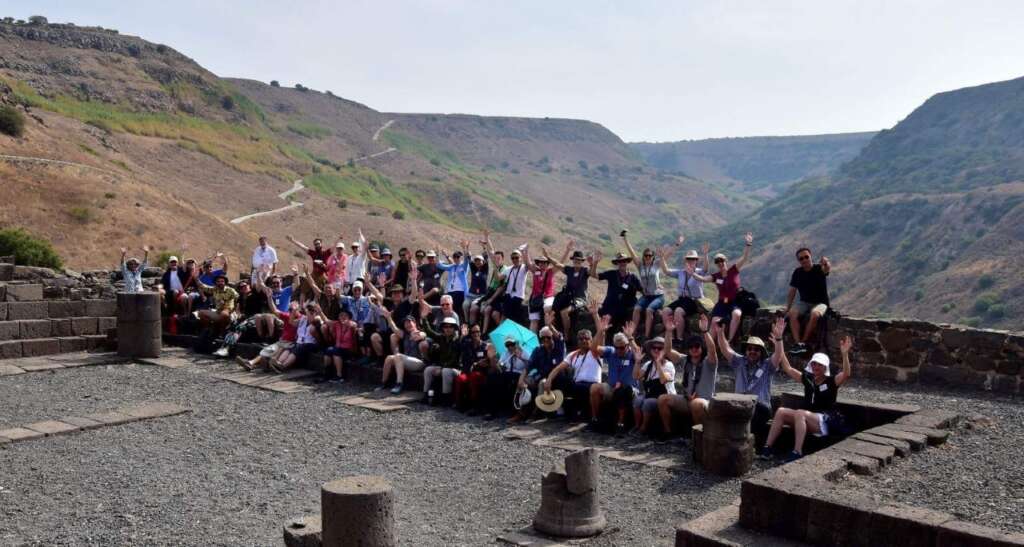
Listening to the Beatitudes in the synagogue at Gamla
In a high point of the tour, Dickson then reads a selection of Jesus’ teachings and invites us to imagine being here, hearing these shocking teachings.
He enacts walking over to where a wash basin would have been in the corner, where an attendant would have washed his hands.
“Then he’d walk over to this little room here, this little cupboard where their Scriptures were all stored, and the scroll would’ve been brought to Jesus. The scroll would’ve been read – who knows what the reading was that day? – and then Jesus would be invited to speak.
“Imagine him saying stuff like this. ‘Blessed are the poor in spirit, for theirs is the kingdom of God. Blessed are the meek, for they will inherit the earth. Blessed are the peacemakers, for they are the children of God. If someone strikes you on the right cheek, turn the other cheek also.'”
According to Roman law in occupied territory, a Roman could stop a Jew and ask him to carry his bags for one mile – but Jesus takes this and urges his followers to go the extra mile.
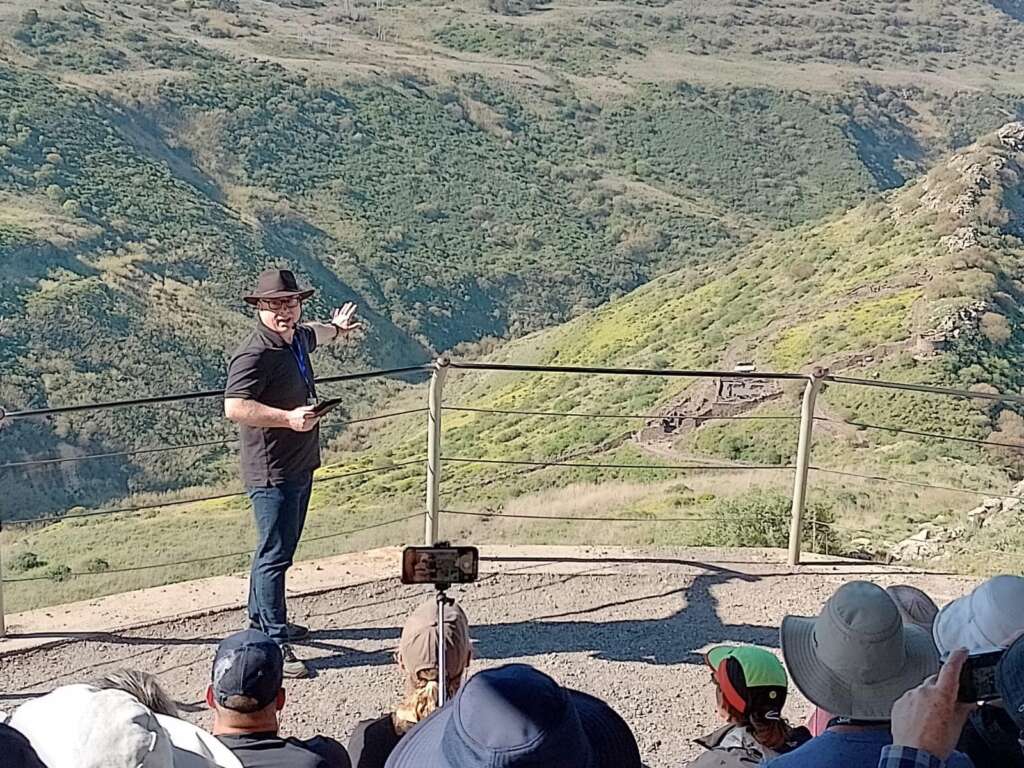
John Dickson tells the tragic story of Gamla
In diametric opposition to the Zealot philosophy, we are reminded to: “’Love your enemies. Do good to those who hate you. Bless those who curse you. Pray for those who mistreat you. Be merciful just as your father is merciful to you … Truly, I tell you, unless you change and become like one of these children here sitting in the synagogue, you will never enter the kingdom. Whoever wants to become great must be your servant. Whoever wants to be first must be a slave of all. For even I, the Son of Man, did not come to be served by you, but to serve you and give my life as a ransom for many.'”
As we imagine the Zealots hearing this topsy-turvy message that clearly contradicts their mindset, Dickson concludes: “I’m sure you now are sensing the tension and how some of the Pharisees and Zealots sitting in the positions you are sitting may be shouting at him at this point, but maybe just being polite, muttering. Others are saying, ‘Gosh, it sounds beautiful.’
“Jesus likely came here pleading with Gamlans not to follow a kingdom of military force but to follow a kingdom of humility and love and ultimately of his own self-sacrifice. He was the one to die for the nation.
“And I can’t help but think of Gamlans 37 years later, anyone over 50 in the last moments on the back of the hill, as the Romans are bringing down this city. I can’t help but wonder if they remembered Jesus’ teaching here and wondered if he was right after all.
“I’ll just let you sit with that information. Let your imagination run wild.”
Comments Selah director and tour organiser Lisa Tarzia: “My biggest take home having done this tour three times is how radical, controversial, offensive and counter-cultural Jesus is. He is not a nice bloke, a good teacher or a figment of the imagination. This tour gives space to dig deep and look at the evidence. It’s nothing short of compelling. Selah!”
The next Origins of Christianity tour with John Dickson will run from 4-13 March 2024. Click here for details.
Email This Story
Why not send this to a friend?
